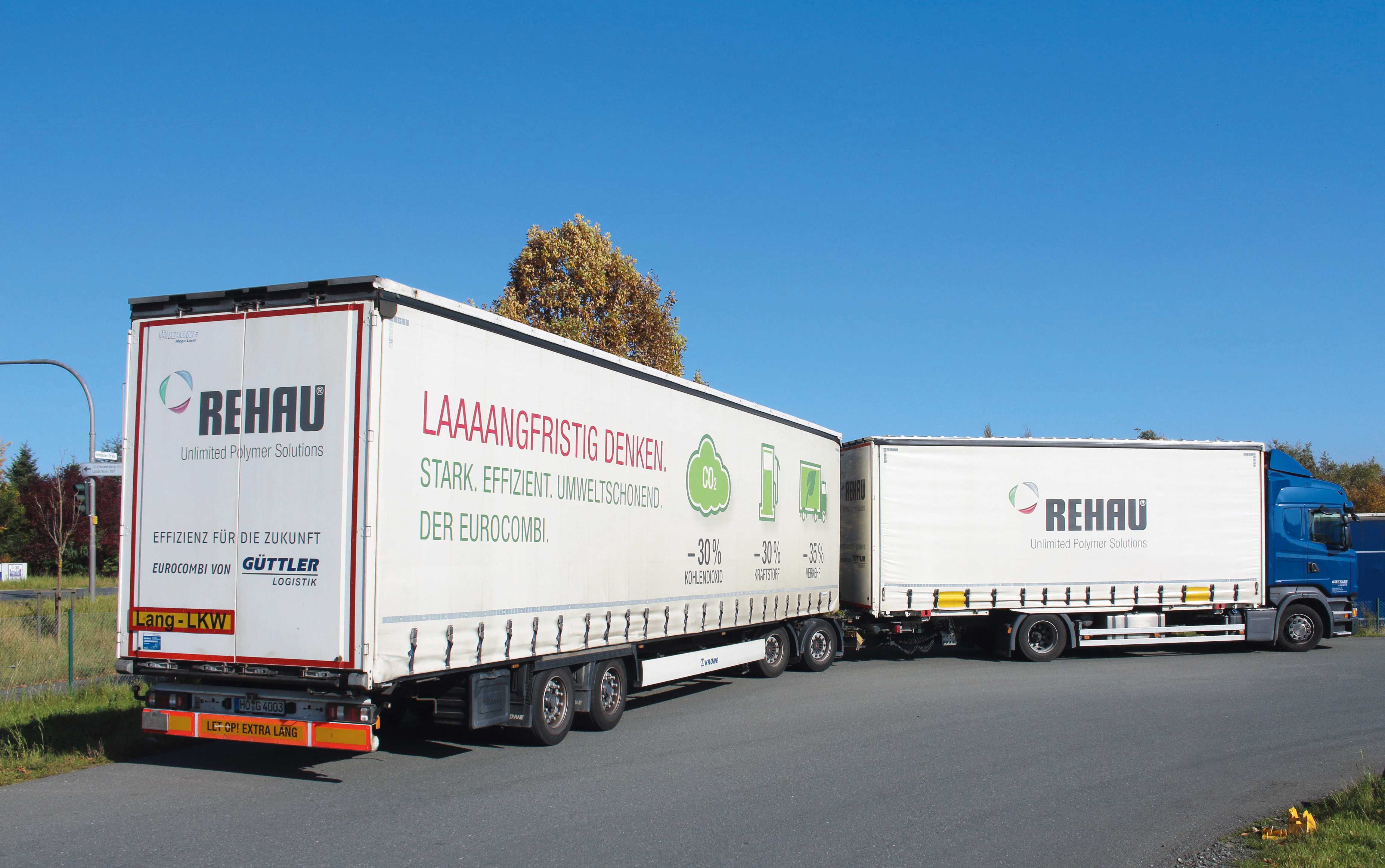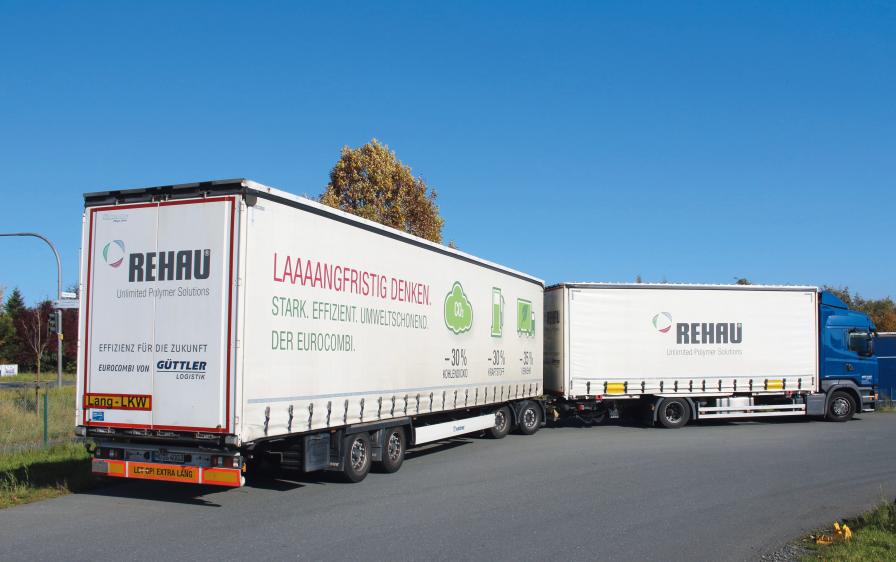LIGHTER AND CHEAPER
“Customers mostly use it for high-volume goods in the automotive industry, for example,” explains Jens Rauer from Krone Product Management. “We haven’t had the vehicle in our range very long and we are already getting really positive feedback from our customers.” One of these customers is Güttler-Logistik based in Hof/Saale in Bavaria. The forwarding agent is using the double layer combination in the automotive area: They are using it to provide transport bumpers for the polymer specialist Rehau + Co. from Feuchtwangen in Middle Franconia to Zwickau in Saxony. The long vehicle combination does a good 1,150 kilometres every day. “For us, the vehicle helps us to remain competitive,” explains Managing Director, Johannes Reuther. “It enables Rehau AG to move a whole 50 per cent more volume with just a small increase in costs – and with the same staffing levels, which, given the driver shortage in our industry, is a key issue.”
With two fewer axles than on a standard type-3 long vehicle combination, the combination is lighter making it possible to carry about 1.5 more tonnes. The acquisition and operating costs are not as high because a long vehicle combination with six axles consumes less fuel and has less tyre wear than a standard type-3 long vehicle combination.
MORE LOADING VOLUME USES UP LESS SPACE
Special vehicles like these are increasingly in demand; the long vehicle combination is becoming increasingly customised: “In test operations, most hauliers have, of course, prioritised the acquisition of standard equipment that can be used irrespective of which long vehicle combination is being operated. By incorporating it into regular operations, market demand for more efficient and specific train combinations has increased.
Politically, the regulation related to unlimited, distance- based regular operations for the long vehicle combination continues to apply based on the existing positive network. With solid, scientifically proven arguments, however, the vehicles speak for themselves: “The increased loading volume reduces CO2 emissions and fuel consumption by about 25 per cent per carrier,” says Rauer. “Additionally, two trips with the long vehicle combination replaces three conventional trips with a semitrailer, which eases traffic congestion on the roads. There is also less load on the road compared to the standard semitrailer due to the higher number of axles.
Given the sharp increase in transport volume in Europe, long vehicle combinations are a sustainable and environmentally- friendly solution for modern logistics.”




